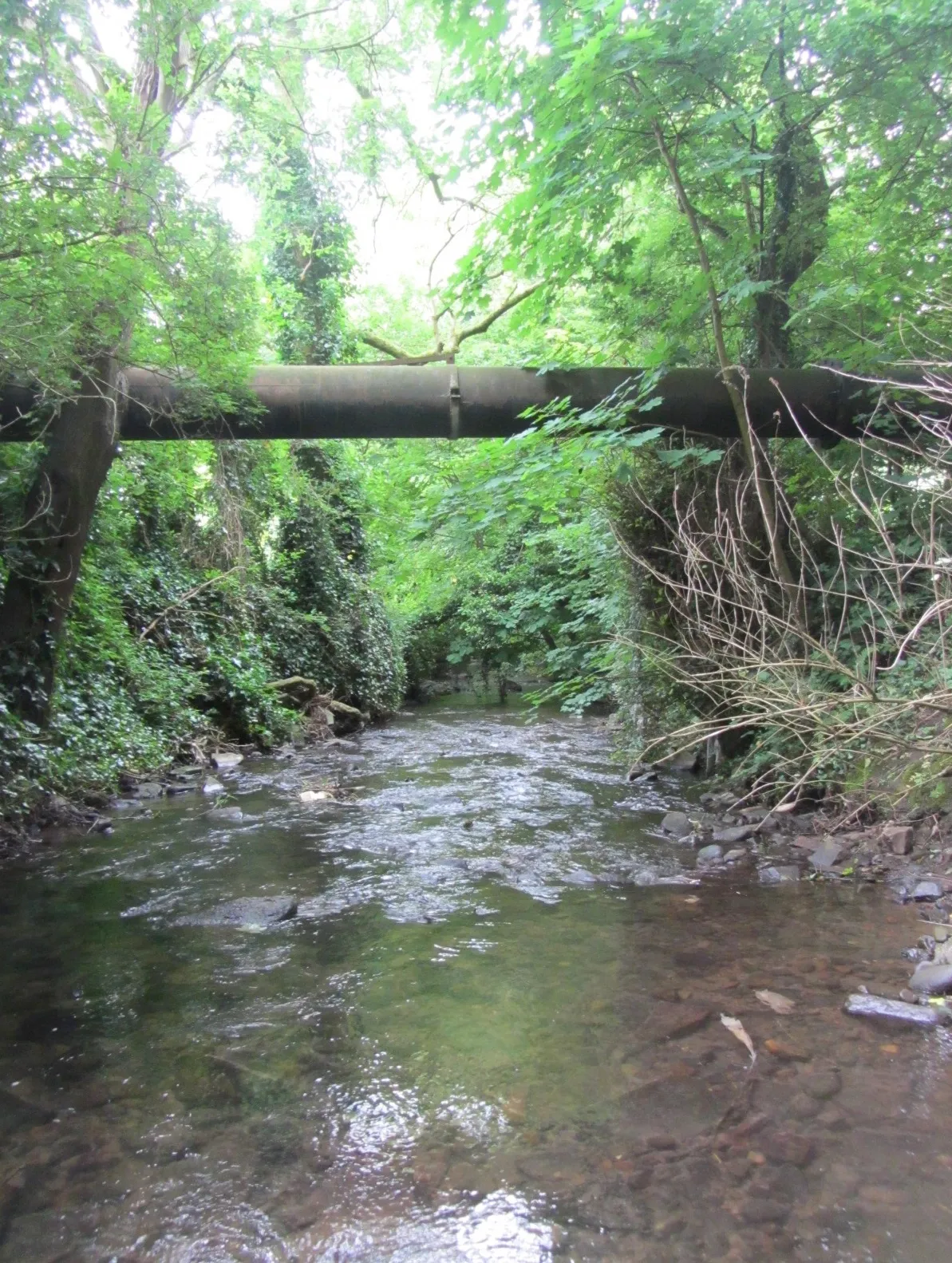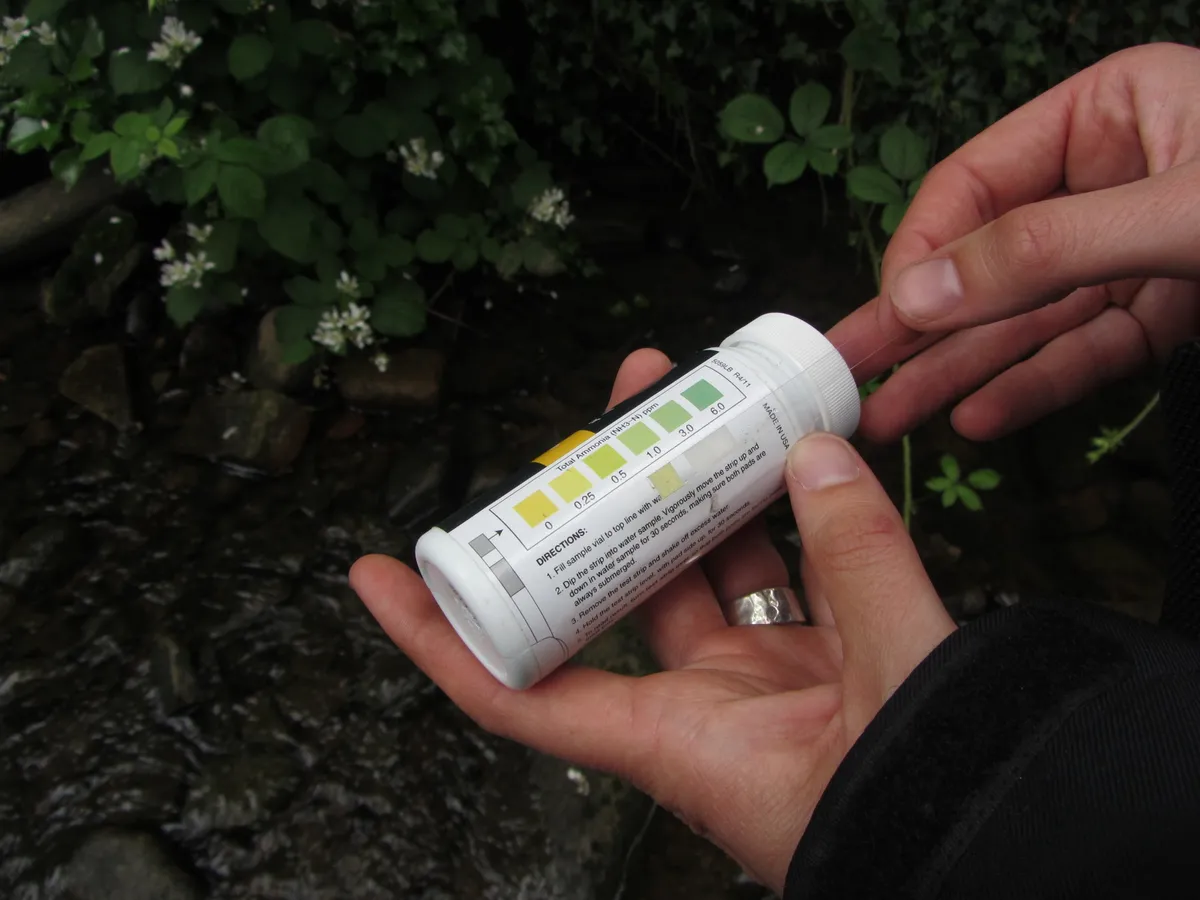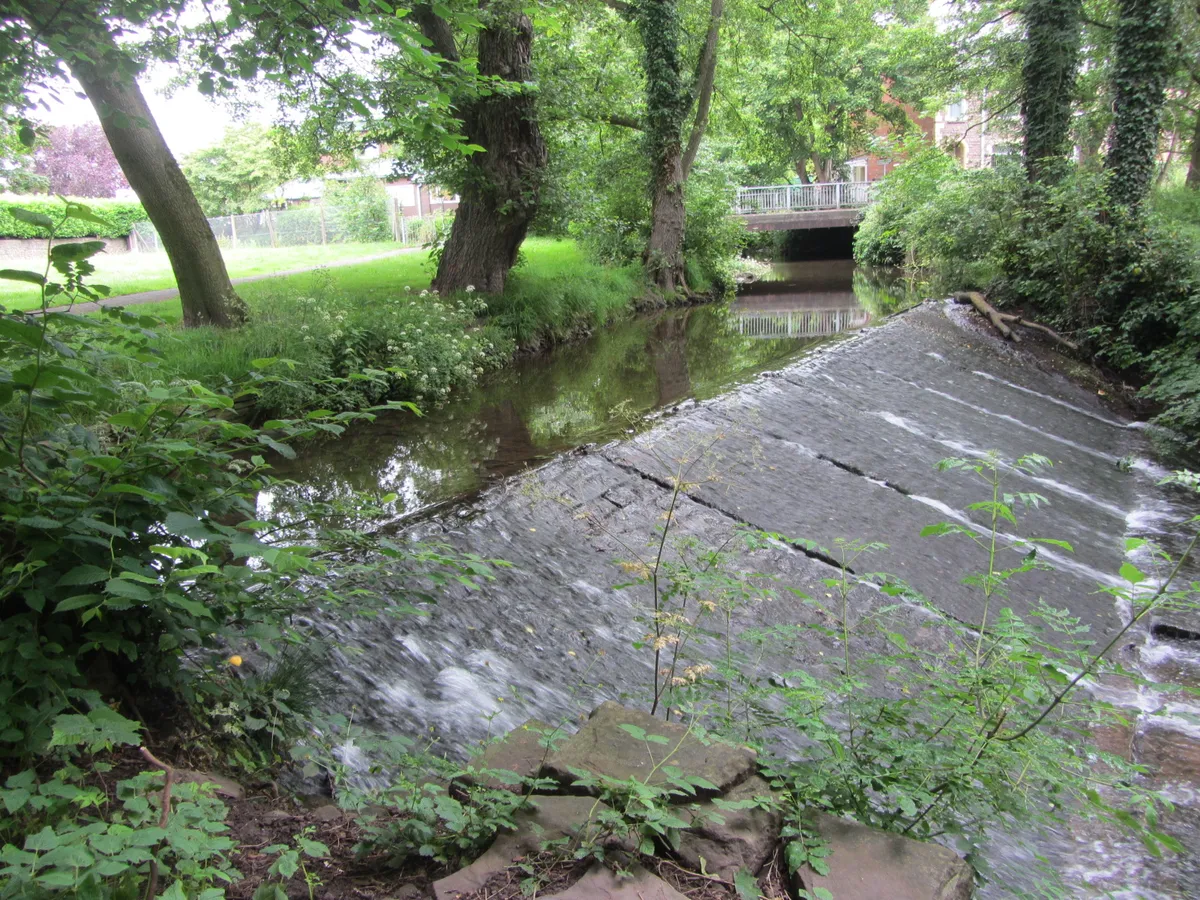Riverside walks are so last year. This year’s must do aquatic adventure is to get in the river and walk up it.
And so it was that I got a lucky invite from local conservationist Tony Konieczny of the Abergavenny Civic Society to wade up the River Gavenny to look for wildlife and explore various issues affecting the health of the river.
The Gavenny flows through my local town of Abergavenny. Novice Welsh-attempters like me tend to say “Aha, Aber means ‘mouth’ so the name means ‘mouth of the Gavenny’”, which is correct until you discover that the town’s proper Welsh name is Y Fenni – pronounced ‘Urvenni’, which translates roughly as River of the Ironworkers.
Tony was marshaling his forces and resources to persuade the townspeople, local councils, conservation bodies and farmers that work needs to be done to improve the water quality and flow – his hope is that salmon and migratory trout will once more spawn in the river.
Joining us was Fen Turner from National Resources Wales (NRW) who are keen to support the project. I don’t possess waders so Tony kindly lent me a spare pair. Alas, I managed to break them – embarrassing. My punishment was to wear wellies.
Attempting to maintain professional cool, I followed the experts through a wild meadow down towards the river Usk. We took a tiny trail and found the Gavenny, just as it reaches the bigger river. The mouth of the Gavenny.
With Tony and Fen surging confidently ahead, I stumbled along in the background but the river was mostly shallow and I successfully ignored the swill of cold stream water that slopped inside around my toes.
I was expecting to see fish but the canopy was so dark above, little light penetrated to the river’s depths and this keeps resident fish numbers down. Tony lifted a few stones to show me the caddisfly, mayfly and midge larvae thronging underneath. But clearing some of the trees would undoubtedly improve the river’s capacity to support more life.

After about 200 yards of wading, I became aware of a growing roar of water – and the trees ahead parted to reveal a 3m high weir with the entire stream thundered over it into a deep dark pool. Two dippers bobbed and flitted at the top of the weir while the steep brick sides of a former mill towered above through the trees on one side while on the other Tony pointed out the leat and channel that would once have housed a waterwheel. There was no way migratory fish could leap this.

For Tony, this was the big obstacle to making the river whole again. The mill and its weir were but small cogs in the vast machine of the industrial revolution that engulfed South Wales and their day was long past. The mill was a private (and enviably lovely) house.
It would take an expensive engineering project to create a fish ladder – essential a series of stepped water tanks – and make the river passable for salmon again. Fen also pointed out that a lot of houses had been built along the adulterated river up stream of the weir and homeowners would be concerned that any change in the river could affect their houses – flooding or subsidence (or both).
Tony believed there was a way around all of this – convincing a local engineering firm to draw up a blueprint, convincing public opinion that it would no affect house prices and then raising the money. I had to admire his optimism.
We couldn’t climb the weir so clambered up the bank and headed via attractive back lanes to the A40 road bridge over the Gavenny where we could drop into the river again.
Here, alongside a little park, the river babbles beautifully in the sunshine. But Fen had discovered another problem. She showed me a tiny drainage pipe carrying greyish water straight into the Gavenny.

“Have a sniff,” she said. The odour of dishwasher tablets. She explained that this was a common problem – that many householders mistakenly connected their appliances to rain water drainage rather than to the sewerage system. Thus they were unwittingly sending water full of chemicals into the river.
Fen took a sample and tested it for toxicity levels using a sort of litmus paper. Within five minutes, the yellow strip had turned dark green and, when compared to a toxicity chart, revealed that the levels of pollution in the drainage pipe were more than enough to kill fish. While this would be diluted in the river, it would do damage.

Fen thought she’d be able to trace the pollution back to its source and talk to the homeowners. But it would take time and resources. And this was just one of many – often recurring – incidents. Each time someone moves into a new home and plumbs in their washing machine or dishwasher, there is room for disastrous error.
Further upstream beyond the town, the problem was more likely to be agricultural run off – both silt, fertilizer and pesticides.
On the positive side, Tony kept showing me the invertebrate life of the river, which to my untrained eye, did look pretty healthy. I turned over a few stones – one of my favourite pastimes – and saw plenty of bullheads. Another good sign. A kingfisher even zipped by to raise spirits even further.

Further upstream we came to a second weir but this one was sloped at an gentle angle downstream to allow fish to wriggle their way up. Above the obstacle, the water was deeper and calmer. And here we came to a third major problem – invasive species. I’d already noticed great stands of Himalayan balsam but Fen and Tony were more worried about the American signal crayfish that have set up home here.


Signal crayfish infest most river systems in southern Britain, legacy of crayfish farming escapees. They drive out the smaller native white-clawed crayfish, eat invertebrates and fish eggs and burrow destructively into riverbanks. All round bad guys. Except that they taste good.
I suggested that they let loose the young people of Abergavenny in a great crayfish hunt and have a huge party. Getting kids out into nature and reducing the numbers of a damaging invader. But this isn’t the way forward, apparently.
NRW fear that crayfish eggs, larvae and viruses would be spread via nets and traps into other waters, exacerbating the problem. Plus, white-clawed crayfish might be caught, too. So, in lieu of a crayfish open season, NRW propose further studies into ways of managing the invader. Seems a shame to me but I’m not charged with managing a delicate ecosystem.
We clambered out and I said goodbye to my guides. I sat by the river in gentle reverie – the only person along an 800-yard stretch on a sunny day in the centre of a town of 15,000 people. It’s as if no one knows it’s here. Tony’s biggest struggle will be to show the people of Abergavenny the treasure in their midst and encourage them to care for it.
